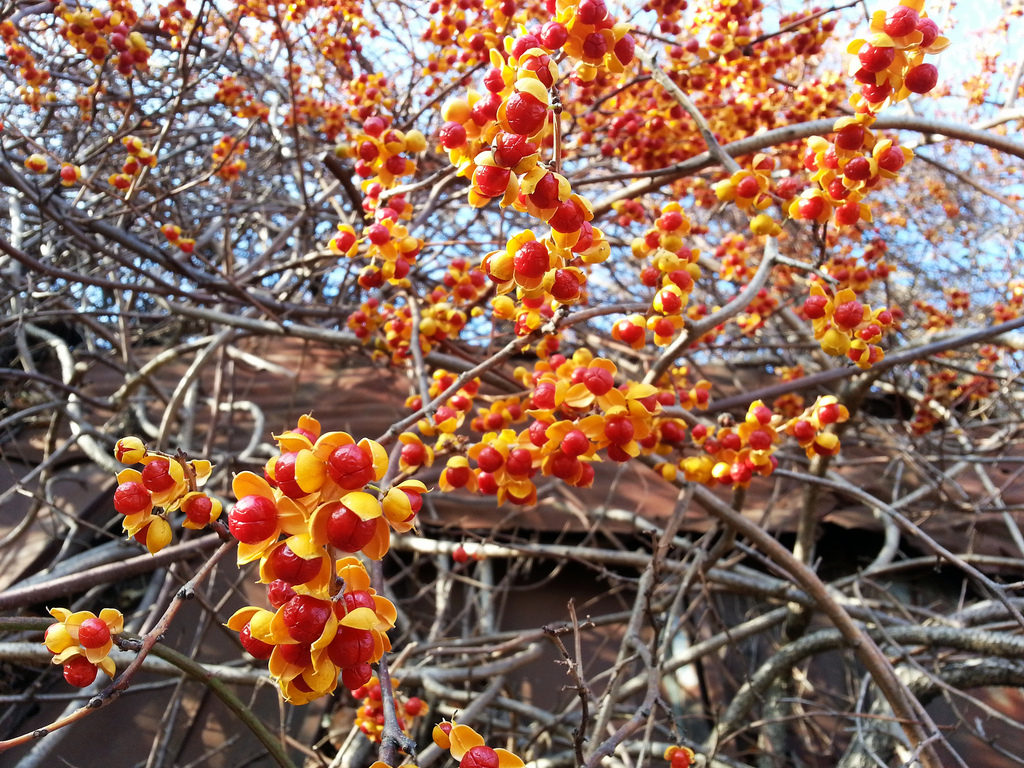North Field Trail
Invasive Plants at Ivy Creek: The Big Three
Vines: In the edge habitat with its full sunlight and backdrop of large trees, vines thrive. Native vines found here include several species of wild grape, Virginia creeper and poison ivy. However, none can compete with the exotic asiatic or oriental bittersweet (above photo). A vigorously growing vine, bittersweet climbs over and smothers native vegetation, robbing it of sunlight. It climbs by girdling the trunks of trees, further stressing the growth of its host. An abundance of showy fruits have made oriental bittersweet popular for use in winter holiday arrangements, another mechanism for its rapid spread.
Trees: Ailanthus with its long compound leaves resembles black walnut and sumac. However, smooth light gray bark and a foul smell when broken off, easily distinguish it from the others. Also known as the "tree of heaven," ailanthus can grow almost anywhere and lets little else grow with it as it releases an allelopathic compound that poisons the soil around it. As with many invasives, it spreads both vegetatively through suckering and by prolific seed production.
Shrubs: In the shrub category, Autumn Olive takes the prize for most invasive at Ivy Creek. It can be readily identified by looking at the back of its leaf which has a silvery sheen to it. Ironically, one of the reasons Autumn Olive was planted in the U.S. originally was for wildlife habitat.. And in fact, butterflies and bees swarm the flowers and birds and squirrels love the fruit, facilitating its spread. However, the fruits are high in sugar and low in other nutrients, which can leave migrating birds in particular without the energy they need. Autumn olive can form thick stands, crowding out native plants and reducing biodiversity.

